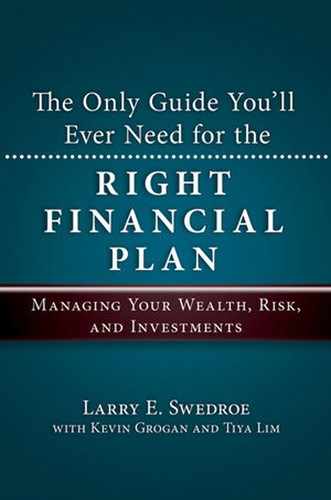Investors frequently face this kind of issue: "I just received a large lump sum of money. Should I invest it all at once, or spread the investment out over time?" A similar problem arises when an investor has sold during a bear market. The question then is: How do you reenter the market?
Rather than investing assets in a lump sum, many investors use dollar cost averaging (DCA), a timing strategy that periodically invests a fixed amount of money in a particular investment or portfolio over a given time interval. The idea is to lower the total average cost per share of the investment, giving the investor a lower overall cost for the shares purchased over time. Such is the theory. But is there any real advantage to using DCA as an investment strategy?
From an academic perspective, answering the question of when to invest is simple and has been known for a long time. The June 1979 issue of the Journal of Financial and Quantitative Analysis published an article by University of Chicago professor George Constantinides titled, "A Note on the SubOptimality of Dollar Cost Averaging as an Investment Policy." Constantinides showed DCA to be an inferior strategy to lump sum investing. In 1992, John Knight and Lewis Mandell published "Nobody Gains From Dollar Cost Averaging: Analytical, Numerical, and Empirical Results," in the Financial Services Review (Vol. 2, Issue 1). Knight and Mandell compared DCA to a buy and hold strategy, then analyzed the strategies across a series of investor profiles from risk averse to aggressive. The authors noted: "Brokerage firms endorse DCA for two reasons. First, they state that returns are increased because more shares are purchased when prices are low and fewer when prices are high. Secondly, they assert that DCA enhances investor utility by preventing an ill-timed lump sum investment. Our results do not support either of these contentions." Knight and Mandell concluded: "Using three separate methods of comparison, we have shown the lack of any advantage of DCA relative to two alternative investment strategies. Our numerical trial and empirical evidence, in consonance with our graphical analysis, both favor optimal rebalancing and buy and hold strategies over dollar cost averaging."
Here is another way to think about DCA. Assume that staying fully invested in equities is suboptimal, meaning you should sell all your equities and then DCA back into the market. At the next investment period you have some money in the stock market already. While you planned to periodically reinvest in the market, you also determined that staying fully invested is suboptimal. You run into this difficulty: Do you continue to buy equities, sell your existing holdings, or do both? Logically, DCA cannot be effective.
Despite the academic evidence, investors and advisers still recommend DCA. They argue that since markets are volatile, DCA allows investors to avoid investing too much when the market is priced high and too little when it's priced low, thus reducing overall market risk. However, they ignore the simple logic that since there is always an equity risk premium—stocks having higher expected returns than bonds—common sense tells us to invest all at once.
Investors and advisers do not always base decisions on logic or evidence. Emotions, such as fear, often play a far greater role in decision making.
While DCA is not an optimal investment strategy, it has value when facing the "lesser of two evils," that is, when an investor simply cannot "take the plunge" and invest all at once for fear of what could happen to the stock market. Fear causes paralysis. If the market rises after they delay, they think, "How can I buy now at even higher prices?" If the market falls, "I can't buy now. That bear market I was afraid of is here." Once deciding not to buy, how do you decide to ever buy again?
One solution is to write down a plan laying out a schedule with regularly planned investments. The plan might include one of these alternatives:
Invest one-third of the investment immediately and invest the remaining two-thirds in equal amounts over the next two months or next two quarters;
Invest one-quarter today and spread the remainder equally over the next three quarters;
Invest one-sixth each month for six months or every other month.
Having written up the schedule, the investor should sign the document. If working with an adviser, the adviser should be instructed to implement the plan, regardless of market performance. Otherwise, the latest headlines or guru forecasts might tempt the investor to stray from the plan.
If the market rises after the initial investment, the investor can feel good about how the portfolio has performed, and how smart she was not to delay investing. If it falls, the investor can feel good about the opportunity to buy at lower prices, and about being smart enough to not put all her money in at one time. From a psychological perspective it's a win/win. Since we know emotions play an important role in how individuals view outcomes, this is an important consideration.
Once convinced that a gradualist approach is the correct one, the investor should ask himself this question: "Having made my initial partial investment, do I want to see the market rise or fall?" The logical answer, and the one that will keep the investor sticking to the plan, is: "I want to see it fall. That way I can make my future investments at lower prices."
